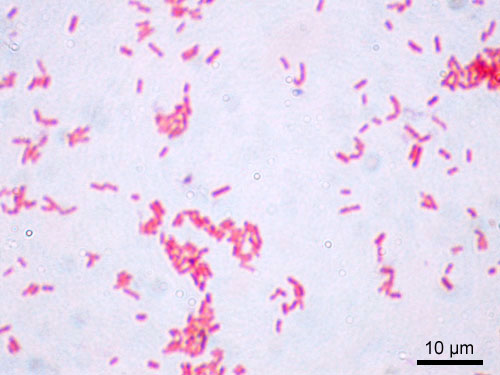What are they?
Coliform is a group of bacteria commonly present in soils and surface water. Most do not hurt humans, but some can cause illnesses ranging from highly severe to mild symptoms.
Drinking water testing includes monitoring for coliform as an indicator species of underlying water contamination issues. If coliform are present and living in the water, there is also a chance that other organisms harmful to human health can be present. This usually indicates an accessible route to your drinking water supply from a bacterial source. (ex. Septic, ag runoff, surface water). Typically found near the surface, they tend to get filtered out by the soils and bedrock as water moves deeper underground.
Most bacteria analyses initially test for Total Coliform. If that is positive, they will then look for fecal coliform. That is the Escherichia coliform or “E. coli” that most folks are familiar with. This smaller group of bacteria is commonly found in human and animal intestines. If the test is positive for E. coli, there is a chance that human or animal waste is making its way to your water source.
Test results
Coliform bacteria are a tough bunch. They are usually the last to die in contaminated water. So, if a drinking water test is negative for these bacteria, it is presumed biologically safe to drink.
If you are interested in testing your water, the Marion County Department of Health has compiled a list of Certified Water System Operators you can contact. These professionals have the correct credentials to collect a sample. Unless you are particularly careful, it is easy to contaminate the sample during collection and receive a false positive from the laboratory. Reach out to the county health department or the UF/IFAS Extension-Marion County office to receive a list of certified samplers.
Some mail-order laboratories also offer coliform sampling that you can do yourself. If you decide to use this method, follow the directions carefully and ship the sample back as soon as possible.
A coliform analysis is relatively inexpensive. In general, the analysis cost ranges from 35-50 dollars. Remember that some certified samplers will also add a trip charge to cover the cost of collecting and delivering your sample.

Most health professionals suggest annual coliform sampling. In addition, sample when there are unexplained illnesses or pregnant women in the household. It is also a good practice to collect samples
Consider a second sample to confirm the result if you receive a positive test.
A positive test should not immediately alarm you. The contamination can sometimes be an isolated event. An old or incorrectly installed well may not be sealed near the surface, allowing rainwater to carry surficial contaminants into your water source. Installation of new pumps, cracked well casings, and flooding are examples of single contamination events.
You can shock chlorinate your well if you are confident that the source of contamination has been fixed. Since this is a cheap and DIY option, many folks do this first and retest later to see if the contamination persists.
Review this article if you are interested in shock chlorinating your well – Private Wells 101: Bacterial Contamination and Shock
If the well and surrounding areas are in good condition and the bacteria returns, the contamination is reaching your well through other means and will need to be treated continuously.
Continuous Treatment Options
Chlorination
Chlorination is the method that most municipalities use to treat drinking water and is considered the industry standard. These systems will tie into your plumbing and blend the disinfectant with your drinking water as it enters a holding tank. For chlorine to be the most effective, water entering the system should be prefiltered to remove suspended solids. Concentrated chlorine can be hazardous, so system maintenance and specific safety measures need to be taken with these systems.
UV
Ultraviolet light (UV) is an effective treatment for microorganisms in your water supply. Simply put, this is an extremely bright bulb emitting a specific wavelength of light that kills bacteria suspended in the water. This method also needs to have a filter to remove suspended particles. If these particles are present in the water, they can block light and decrease efficiency.
Ozone
Ozone is a very reactive form of oxygen that can kill organisms in your water supply. In addition, ozone can oxidize metals and decrease taste and odor issues. Though it is very effective in water treatment, ozone must be generated at the point of treatment. These generators can be expensive and use a lot of electricity. Moreover, a system that is not maintained or defective can leak into your home and cause some health issues. If you decide on ozone, do plenty of research and hire a treatment specialist experienced in ozone system installation and maintenance.
Distillation
Distillation is a method that heats water to its boiling point and then allows it to cool and condense into a separate container. This process removes many contaminants, and the heat kills bacteria. These systems are primarily used as stand-alone countertop devices and not for whole-house treatment. Some see this as a disadvantage and as an advantage to others. No plumbers or technicians are needed to purchase, install, and operate this system. Many folks travel with them to get consistent water quality wherever they go. Disadvantages of this system are limited treatment volumes (produces only a couple of gallons a day), increased electricity use, and initial cost.
Additional References:
https://extension.psu.edu/coliform-bacteria
https://ag.umass.edu/cafe/fact-sheets/ultraviolet-radiation-treatment-of-drinking-water-supplies
https://extension.psu.edu/tips-for-buying-water-treatment-equipment
Sign up for the UF/IFAS Marion County Water Resources Newsletter!
 0
0
